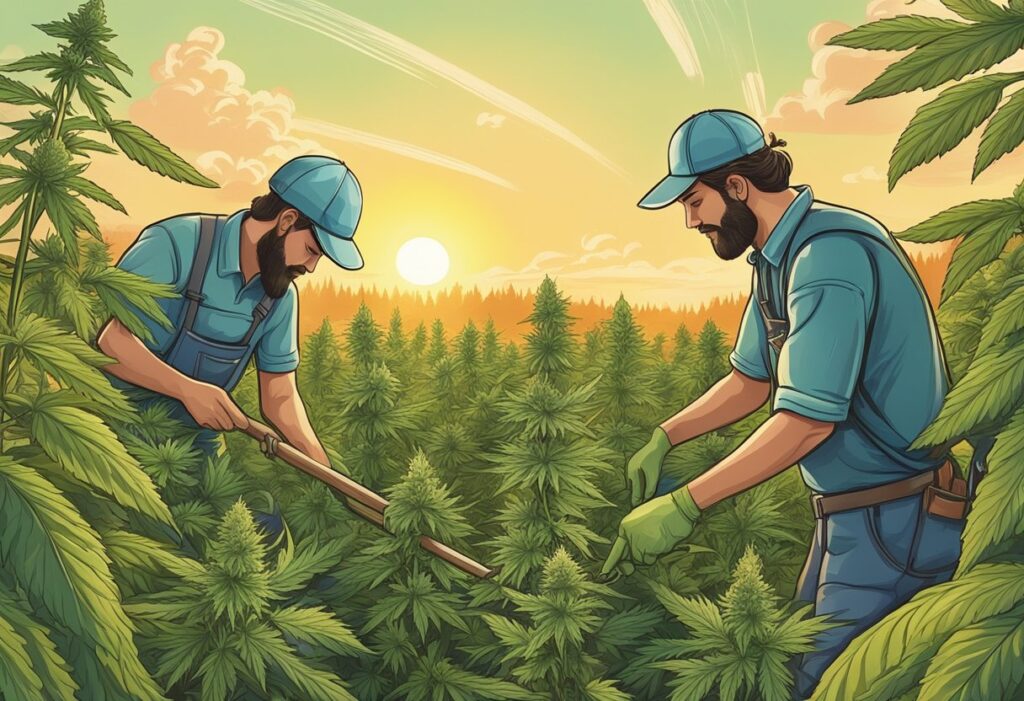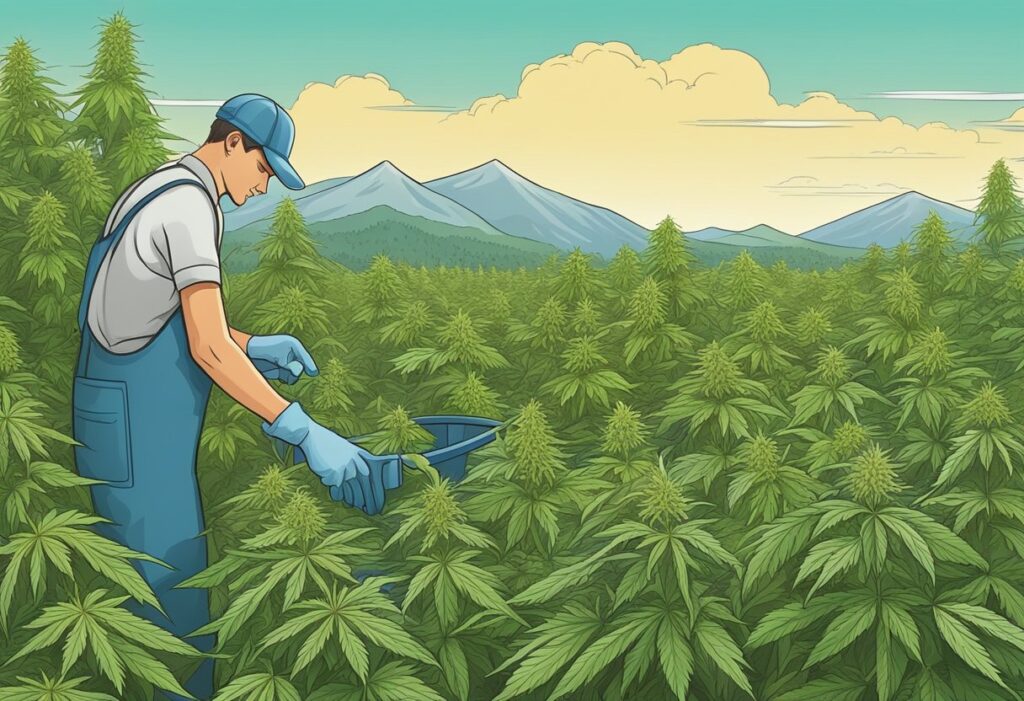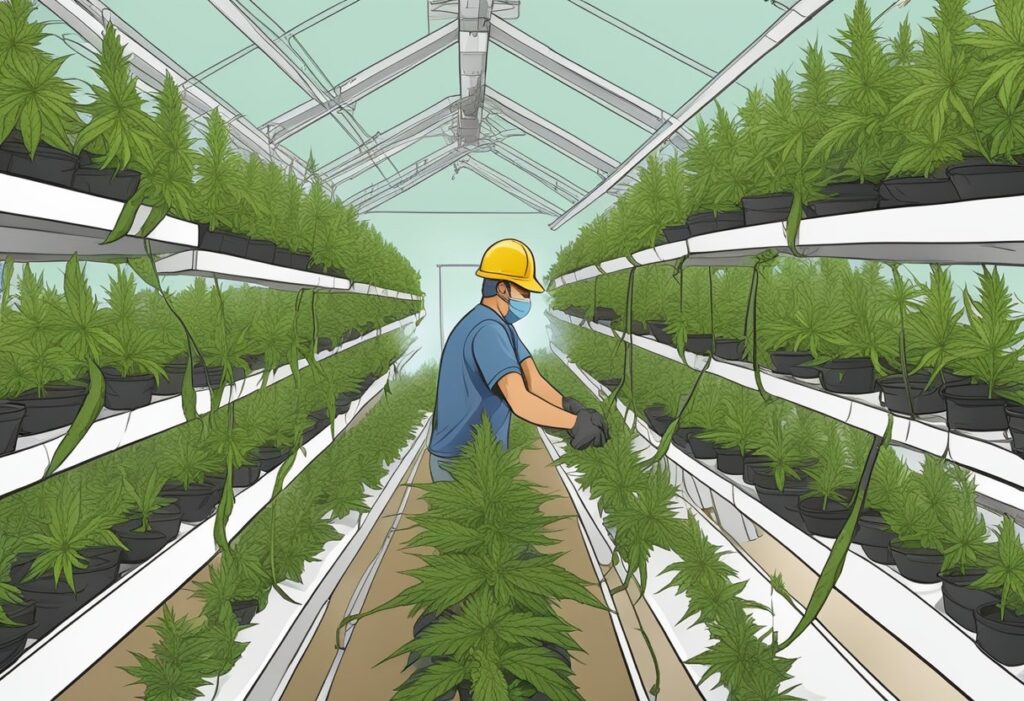
When harvesting cannabis in Canada, identifying the optimal harvest window is crucial to maximize potency, aroma, and effects. Your cannabis plants will signal readiness through the pistils and trichomes, which demand close observation.
Pistils: Initially, your cannabis plant will display white pistils, indicating the flowering stage is underway. When you notice 60-70% of these pistils darken and curl, your plant is approaching peak THC levels. At 70-90% darkened pistils, the THC is converted into CBN, offering a more calming effect.
Trichomes: More reliable than pistils, trichome color directly indicates cannabinoid maturity. These are the resin glands where THC, CBD, and other cannabinoids are produced.
Use a magnifying tool to inspect trichome color accurately. Here’s a simple table to guide your harvest timing based on trichome observation:
| Trichome Color | Cannabinoid Levels | Effect |
|---|---|---|
| Clear | Low THC, CBD | Less potent, premature |
| Milky White | High THC, average CBD | Peak potency, euphoric |
| Amber | Lower THC, higher CBN | Relaxing, anti-anxiety |
Timing your harvest is a delicate balance. Harvest too early, and you may forego potency and experience; too late, and you risk a sedative product. Remember, your personal preference for the balance of cannabinoids will guide your decision on when exactly to cut your plants.

To achieve the best quality in your cannabis harvest, it’s crucial to employ the right techniques and prepare adequately. Details such as timing, trimming methods, and conditions for curing and storage play a significant role in the potency and flavor of your final product.
Before you begin harvesting, ensure your plants have been properly pruned throughout the vegetative stage and flowering stage to promote optimal growth. The last watering should occur a few days prior to harvesting to allow the soil to dry slightly. Gather necessary tools for cutting, such as pruning shears, and wear gloves to protect your hands and prevent the resin glands from sticking to your skin.
When the time to harvest arrives, usually indicated by the color and condition of the resin glands, cut the main stem using sharp shears for a clean cut. Indica and sativa strains may have different harvesting times. Collect the buds carefully and handle them delicately to avoid damaging the oil-rich trichomes.
Trimming can be done in two main ways: wet trimming and dry trimming. Wet trimming involves removing the sugar leaves and fan leaves right after cutting, while the plant is still fresh. Dry trimming is done after the buds have been dried, making for easier handling as leaves curl away from the bud. Choose your method based on your environment and resources; wet trimming can speed up drying but requires more immediate labor.
Curing is a critical process where the buds are kept in controlled conditions to enhance their potency and terpene profile. Dry the buds in an environment with 45-55% humidity and a temperature around 60-70°F (15-21°C). Then, store them in airtight containers, opening occasionally to let fresh air in and maintain the curing process.
The final quality of your cannabis is largely influenced by the terpenes, resin glands, and essential oils preserved during harvesting, trimming, and curing. Proper technique ensures these elements are not lost, maintaining the potency and flavor profiles of your buds.
The environment plays a major role in determining your harvesting technique.
Remember that timing and careful handling are crucial for a successful harvest, whether you cultivate indoors or outdoors.

After you’ve determined the optimal harvest window for your marijuana plants, the attention shifts to post-harvest processes, each crucial in securing not only the yield but also the quality of your product.
Drying Cannabis Immediately after harvesting, drying is your first step. Proper drying involves controlling the temperature and humidity to ensure a slow and even process:
Curing Cannabis Once drying has reduced the moisture content to an ideal level, curing begins to refine the flavor and potency:
Factors for Success
Maintaining Quality Luca Cosentino, a prominent figure in cannabis cultivation, emphasizes the importance of quality post-harvest handling. By combining harvesting techniques with controlled post-harvest processes, you ensure a high-quality product that reflects your hard work and dedication to the craft.
To determine the best time for harvesting, observe the color of the pistils and the clarity of the trichomes on your plants. Pistils should turn from white to shades of red, orange, or brown, and most should start to curl. Clear trichomes will turn milky and then amber when they’re ready.
Top buds tend to mature quicker and can be harvested first. Use clean, sharp scissors to snip the buds, handling them delicately to preserve trichomes. Lower buds may need additional time to develop fully before you harvest them, so monitor them separately.
A 48-hour period of darkness before harvest is believed by some growers to increase resin production, potentially enhancing quality. To apply this, simply keep your plants in total darkness for two full days before you plan to harvest.
When ready for harvest, the trichomes of marijuana will shift from a clear appearance to a milky or cloudy look. Eventually, they will turn amber. Use a magnifying glass to inspect these tiny resin glands accurately.
Yes, you can harvest marijuana buds individually. This selective harvesting allows you to pick buds at their peak while giving others more time to mature, which can lead to a more prolonged harvest period and a staggered drying process.
We ship and deliver world wide via USPS and various couriers.
We offer a wide range of secure and anonymous online payment options.
We care about you, our customer. Please contact us with any questions or concerns.
Find out more about the benefits of being a loyal and regular customer.
WE ARE EVERY GROWERS ONE STOP SHOP TO ACQUIRE PREMIUM CANNABIS SEEDS FOR SALE IN THE USA, CANADA AND AUSTRALIA

Farmers Lab Seeds 2024, | All Right Reserved
Seeds are sold as novelty items, souvenirs, and collectibles. They contain 0% THC. We encourage our customers to check the legislation in their Country, State, Province, and Municipality prior to purchasing items from our store. We do not provide growing information.
All seeds are sold as hemp, and lab tested under 0.3% THC. This product is not for use by or sale to persons under the age of 21. This product should be used only as directed on the label. It should not be used if you are pregnant or nursing. Consult with a physician before use if you have a serious medical condition or use prescription medications. A Doctor’s advice should be sought before using this and any supplemental dietary product. All trademarks and copyrights are property of their respective owners and are not affiliated with nor do they endorse this product.
These statements have not been evaluated by the FDA. This product is not intended to diagnose, treat, cure or prevent any disease. Individual weight loss results will vary. By using this site, you agree to follow the Privacy Policy and all Terms & Conditions printed on this site. Void Where Prohibited by Law.